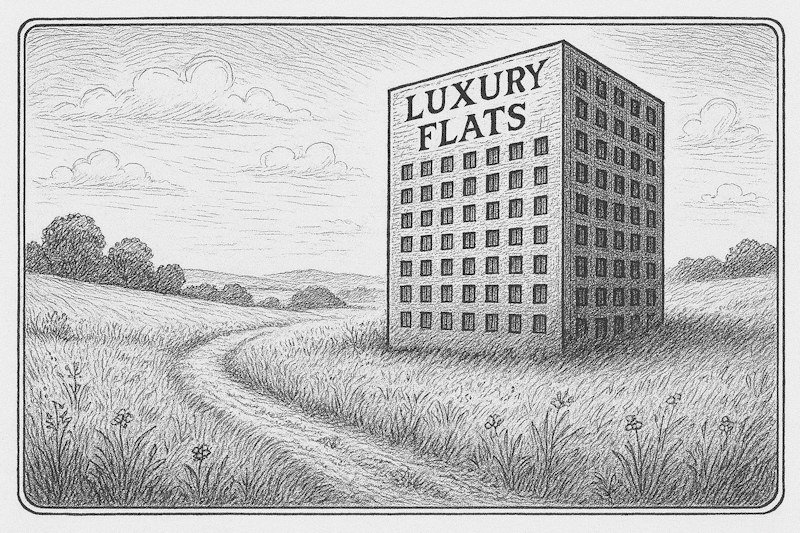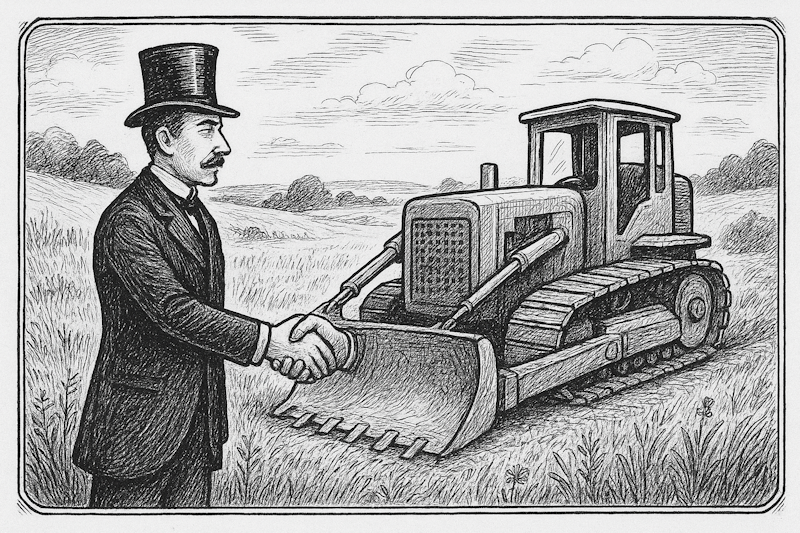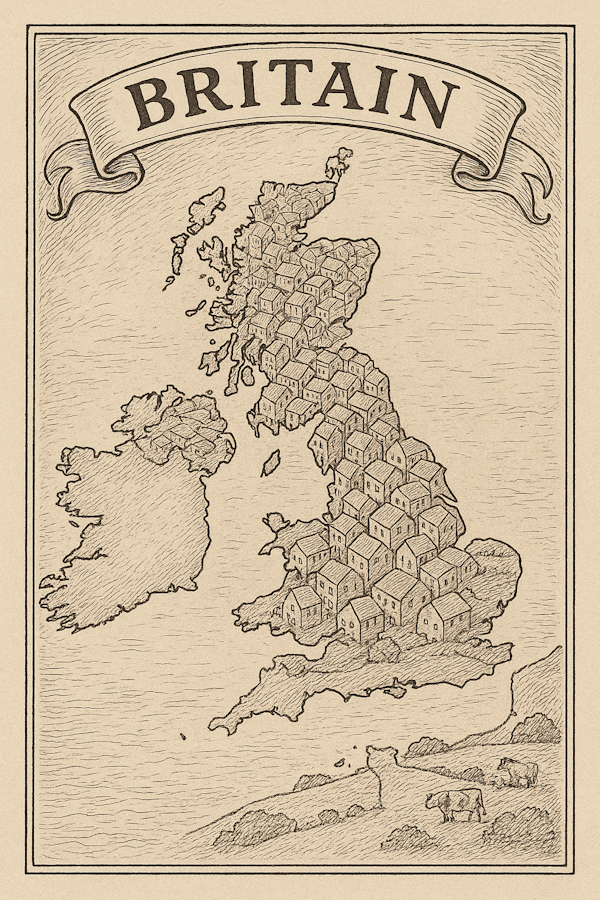The Great Green Field Grab: Because Who Needs Towns When You’ve Got Meadows?
Sol News – Delivering the Truth, with Optional Outrage


Best for Who?
The Green Field Grab
Once upon a time, towns and cities were built to last. They had high streets, pubs, libraries, even that mythical beast known as public transport. Today? Developers would rather roll out another “affordable luxury” estate on a patch of once-green countryside than touch the derelict shells of Britain’s town centres.
Why? Because it’s cheaper. Or so they say. Cheaper for them, certainly. Best for who? The local community choking on more traffic and losing what little countryside is left? Or best for the developer who gets to pocket the profits without the faff of regenerating a real town?
Let’s not kid ourselves: “green field development” is just the sanitised phrase for ripping up farmland, wrecking habitats, and calling it progress.
Sol verdict
Green field development is progress in the same way replacing your gran’s garden with a nando’s car park is “community building.”
It’s called progress.
Or, as your local MP insists while fumbling with a hard hat: “cost savings.”
Let’s translate that. “Cost savings” means:
Cheaper to flatten a meadow than to untangle the rusty pipes and moldy
bricks of a half-forgotten industrial estate.
Developers can slap up houses faster, flog them at market rate, and
buy another yacht while you wait 15 years for the promised doctor’s
surgery that never appears.
The MP gets to stand in a field with a hard hat pretending to know how
bricks work.

The Developer’s Dictionary
Because words don’t mean what you think they mean.
“Affordable Housing” – one flat above the Tesco Express for £289,000.
“Community Hub” – a shed with WiFi that doubles as a polling station.
“Eco-Friendly” – painted green.
“Close to Nature” – directly built on top of it.
“Heritage-Inspired Design” – beige bricks, fake Tudor beams, and windows that don’t open properly.
“Investment Opportunity” – you’ll never live here, but someone in Dubai will.
Sol slogan of the week
“Britain 2050: one big housing estate with occasional sheep.”
Special Offer! Sunlit Grove Parkland Heights™
“Because who doesn’t want to live in a house named after the thing we just bulldozed?”
Amenities:
A bus stop two miles away.
One GP surgery pencilled in for 2043.
A “local pub” that was mysteriously flattened for extra parking.
A playground so small the swings operate on a time-share basis.
Wildlife Relocation Scheme: Hedgehogs, owls, and bats kindly “moved” to the nearest A-road.
Community Spirit: A cul-de-sac WhatsApp group featuring bin-day reminders, dog poo complaints, and passive-aggressive notes about wheelie bins left 3cm over the curb.
Barrattbrick plc presents:
“Turn rolling meadows into rolling profits! Secure your slice of heritage destruction today. Guaranteed returns, minimal shame.”
The Sol reality check
Britain has 300,000 empty homes — but apparently not the right kind of empty homes.
Town centres rot with derelict shops and pigeon colonies while farmland vanishes.
MPs still call this “regeneration” — though they’ve never been to the towns they’re not regenerating.
So next time you see an MP cheerfully announcing a “cost-effective” housing solution in a field near you, just remember: what they mean is “cost-effective for someone else’s pocket.”
Yours will be paying the price in car journeys, rent, and lost countryside.
SOL Verdict: If Britain put half as much energy into fixing its towns as it does into flattening its fields, we’d have homes people actually want to live in — and maybe even a pub to walk to.
Britain’s green fields: once home to skylarks, hedgerows, and cows with nothing more pressing than chewing grass.
Now? Prime real estate for 800 identical beige houses, a Tesco Express, and a “community hub” that no one will ever use.
But who actually benefits?
Certainly not the local residents who now live in The Meadows at Sunlit Grove Parkland Heights (all names copyright pending), where the nearest bus stop is two miles away and the “local pub” was bulldozed in week one.
Meanwhile, the hollowed-out town centre down the road — with boarded-up shops, derelict flats, and a pigeon-to-human ratio of 12:1 — remains untouched. Why regenerate what already exists, when you can just keep spreading outwards until Britain resembles one giant Barratt estate?
The Big Question: Best for who?
The environment? Nope.
First-time buyers? Not really — they’re still priced out.
Local communities? Unless you count a cul-de-sac WhatsApp group as
community spirit.
Property developers and the investors bankrolling them? Bingo.



